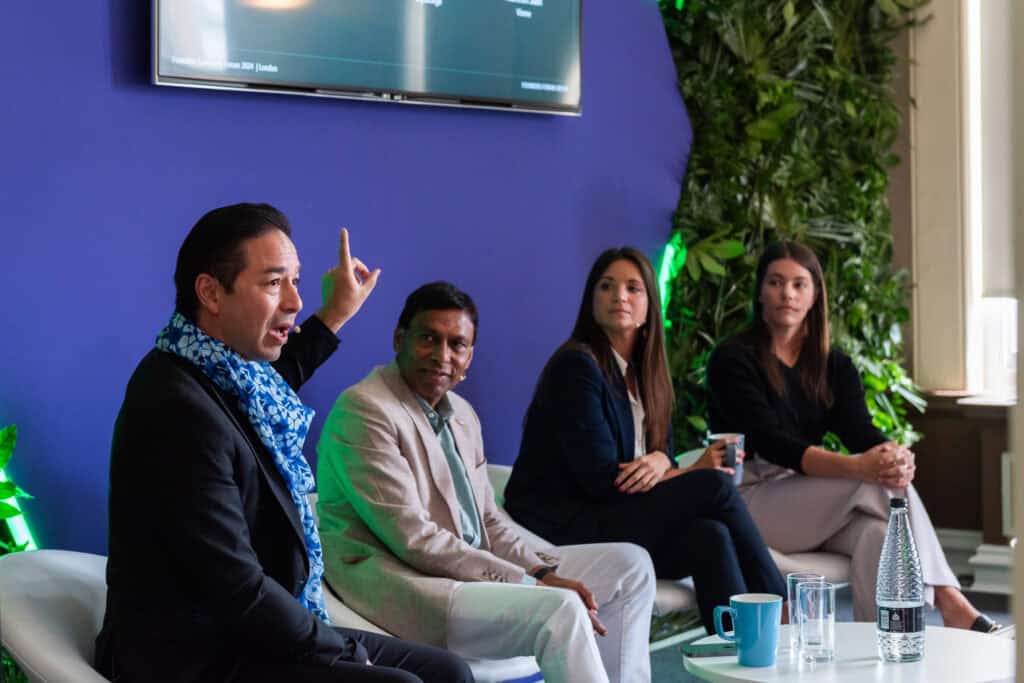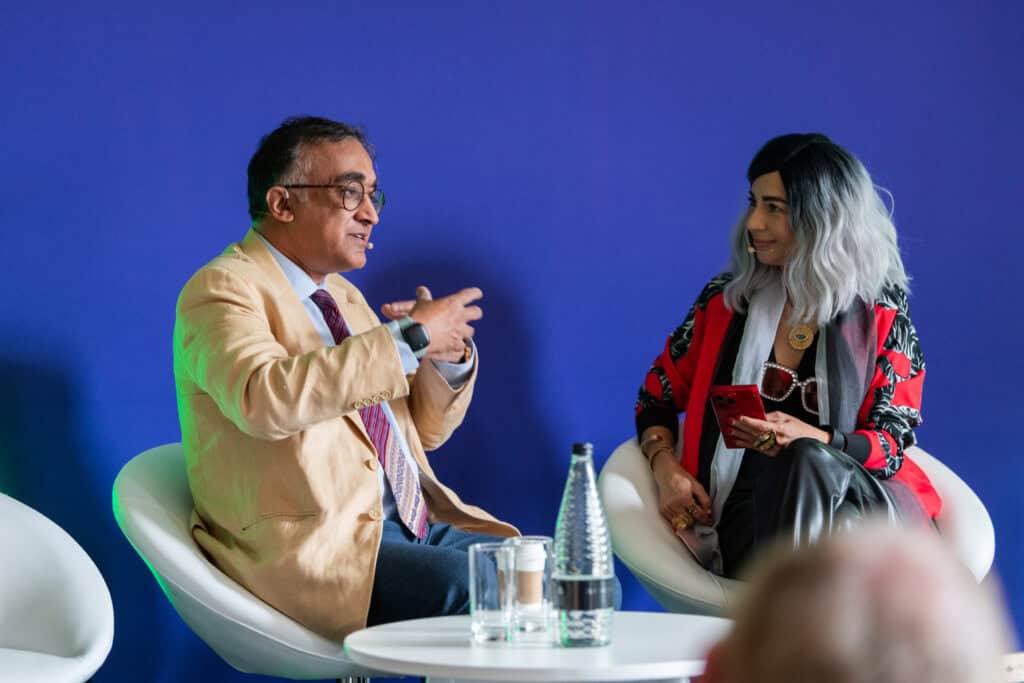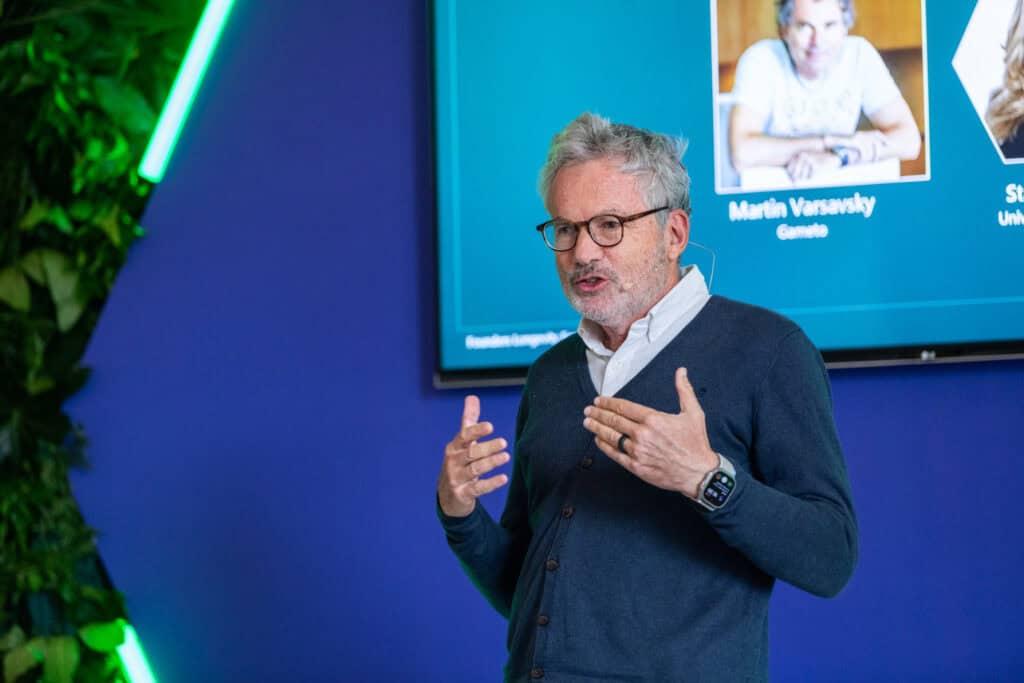Last updated on April 8, 2025
From AI tracking tools to predictive healthcare, discover the longevity technology trends reshaping our approach to ageing.
The market for global longevity technology has always existed, from ancient elixirs and alchemy to today’s pioneering biotech innovations. But in the last five years it has evolved into a full-fledged industry, merging science, investment, consumer health, and surpassing a $600b global valuation.
By targeting the hallmarks of ageing, longevity technology treatments and therapies can slow down or even reverse the ageing process, and tackle diseases like cancer, heart disease, and dementia, caused by the same biological drivers that cause all aspects of ageing.
Our Founders Longevity Forums, hosted in partnership with Longevity.Technology in London, Dubai, San Francisco, and Singapore, bring together some of the brightest minds in the sector, uncovering new longevity research and the latest longevity tech startups.
Here are the biggest longevity technology trends to watch this year:
1. Longevity Technology Companies Are Redefining The Ageing Process
There’s an explosion of new health tech startups, bio tech firms, and cutting-edge longevity technology startups tackling ageing in different ways.
TAME is exploring whether the popular diabetes drug, Metformin, can slow down ageing in humans. Turn Biotechnologies is developing mRNA medicines that induce the body to heal itself by instructing specific cells to fight disease and repair damaged tissue. Agemica is working on a vaccine for ageing, while Mitrix Bio is pioneering mitochondrial transplant to reverse ageing by up to 30 years.
Scientists are also making human embryo models from stem cells, replacing aged body parts with youthful, genetically identical versions, and transplanting living organs from one species to another. BE Therapeutics is developing technology to engineer functional brain tissue to replace tissue impaired by age-related damage. Tomorrow Biostasis is offering whole-body cryopreservation, with the hope to one day return dead bodies back to life.

2. AI Is Driving Personalised Longevity Solutions
Longevity technology companies are leveraging AI to accelerate drug discovery, track ageing in real-time, and shift healthcare from generalist and reactive to personalised and preventative.
Alex Zhavoronkov’s Insilico Medicine ran the first human trial of a drug designed by generative AI. Its multi-modal AI, PreciousGPT, synthesises and interprets data from different cell lines and tissues to enable scientists to run pre-clinical research at minimal costs.
Samir Mitra’s Reya.ai integrates AI agents to continuously assess patient health, enabling real-time, data-driven care and making deep health evaluations more affordable and more accessible. The challenge now is how can we safely move beyond research labs and into everyday healthcare.
3. The Health And Beauty Worlds Are Merging
Beauty standards used to prioritise outward appearance over inner wellbeing. Now, health and beauty are converging, as companies recognise the need for scientific proof to back up their claims.
L’Oréal’s Cell BioPrint, for example, provides personalised skin analysis in just five minutes, using advanced proteomics which investigates how protein composition in the human body affects skin aging.
Iryna Kremin’s beauty convention INNOCOS has seen an increase in conversations surrounding regenerative technology in the beauty industry. New hardware can examine the skin’s cellular level, monitoring features such as excess peptides, allowing beauty and skincare to be even more personalised and effective.
With the global beauty sector expected to reach $590b by 2028, the longevity beauty market has huge potential for growth.

4. Governments Are Implementing Pro-Longevity Policies
Longevity isn’t just about medical breakthroughs; it’s about policy, incentives, and rethinking how we approach healthcare at scale. Governments must incentivise healthcare systems to prevent disease, not just treat it.
Countries like the UAE and Singapore are pioneering models that integrate healthspan-focused policies, national genome projects, and government-backed longevity technology initiatives to reduce disease burden and lower healthcare costs.
Led by Dubai’s booming technology sector, the UAE’s proactive approach of identifying challenges, funding innovation, and integrating health data demonstrates how policy-driven health strategies can accelerate change, while Singapore has implemented the Healthier SG programme which personalises health plans and subsidises preventative care.
5. Longevity Technologies Are Predicting Future Diseases
The next frontier in longevity technology goes beyond early detection to prediction. To prevent future age-related disease, companies are tracking a variety of biomarkers to predict mortality and cognitive decline with greater precision than conventional tests.
TruDiagnostic measures your biological age and the pace at which you’re ageing through epigenetic data analysis. GlycanAge measures your age and your response to life changes based on glycan profiles. NeuroAge lets you test your future risk of Alzheimer’s using genetics, blood tests, and lifestyle data, while Naveen Jain’s Viome analyses activities in your oral microbiome, gut microbiome, and cells using RNA sequencing.
In femtech, Dmitry Gurski’s Flo Health analyses data using AI to accurately predict menstrual cycles, ovulation windows, and potential fertility phases. By combining AI with vast datasets from epigenetics, clinical lab values, and proteins, researchers have created predictive models capable of diagnosing diseases like cardiovascular disease, chronic kidney disease, and even depression — sometimes years before symptoms appear.

6. We Need Global Cooperation on Longevity Technology to Guarantee Safe Innovation
The cost of age-related chronic diseases will reach $47 trillion globally by 2030, while increasing life expectancy by just one year is worth $38 trillion. So economic forces are driving the longevity sector forward.
With the global rise of longevity clinics and the clear economic incentive, the conflict between commercial interest and health outcome is a growing concern. Some facilities operate without demanding basic health screenings, highlighting the need for consistent definitions and regulations across the industry.
The question of who is funding these initiatives remains unanswered, and addressing such gaps requires a multi-stakeholder approach involving researchers, clinicians, policymakers, and investors.
Ultimately, we need to widen access to longevity therapies, and the cost of treatments need to come down, without jeopardising their quality. More physicians need training to work with complex biomarkers to really move the needle and broaden the impact of longevity technology at scale.
Innovating in the longevity space? Register your interest in our upcoming Founders Longevity Forums.
 All Posts
All Posts


